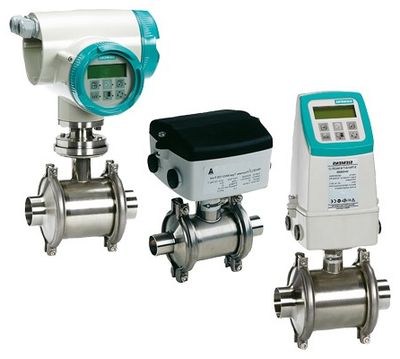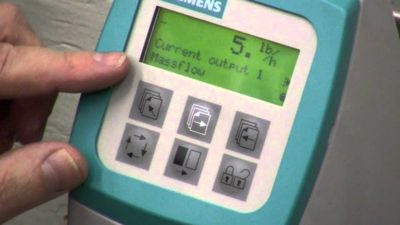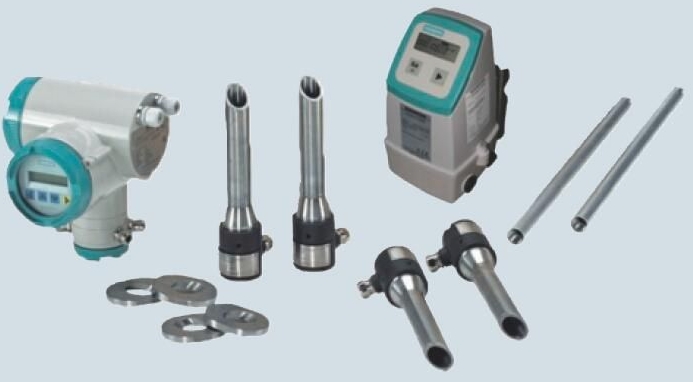What is a Flow Meter
07.03.2022
One of the important conditions for the proper conduct of any economy is the careful accounting of the materials, substances, and so on consumed during specific activities. This is especially true for the utility sector, which in the current time of crisis requires a rather large part of the income. That's why to control and save personal funds it is desirable to install in each apartment or house the so-called flow meter, or a meter of the consumed liquid.
What is a flow meter?
 The flowmeter definition is a device that facilitates the correct operation of the underfloor heating equipment. The device is most often used for balancing multi-circuit systems with liquid heat transfer fluid. It is installed directly in the collector. Only the correct installation and adjustment of the flow meters of the floor heating can provide high-quality heating of the building.
The flowmeter definition is a device that facilitates the correct operation of the underfloor heating equipment. The device is most often used for balancing multi-circuit systems with liquid heat transfer fluid. It is installed directly in the collector. Only the correct installation and adjustment of the flow meters of the floor heating can provide high-quality heating of the building.
The main function of flow meters or as they are also called, float rotameters in the system of underfloor heating is to regulate the flow of the coolant in the water circuits. Installation of such a device allows:
- avoid overconsumption of electrical energy in the process of heating the coolant;
- provide uniform heating of all water circuits;
- exclude temperature fluctuations in different rooms.
The need to use flow meters arises in buildings where floor heating with different floor areas is performed. Voluminous rooms require longer pipe lengths, so they are heated less intensively than smaller rooms. Therefore it is only possible to achieve uniform heating and ensure a comfortable temperature in the whole house with such a device.
The flow rate meter for the underfloor heating system is a mechanical type device with a plastic or brass housing. Inside it, there is a polypropylene float. On the upper part of the body is a transparent bulb with markings. In the process of circulation of the coolant, the float comes into action, moving up and down in the direction. According to its position, you can use a scale to determine the volume of liquid in the pipeline.
What does a flow meter do?
 The flow meters are installed on the return manifold branches of the underfloor heating manifold. They consist of a housing, a transparent bulb with a scale, and afloat. This design allows you to monitor the flow of the coolant and its temperature. When you reach a given temperature the flowmeter itself narrows the hole for the coolant, thereby reducing the temperature and flow of the coolant, protecting the system from overheating and energy consumption. You can do without flow meters very rarely, namely when the room is always maintained at a stable temperature and the length of pipe of each circuit is the same after all.
The flow meters are installed on the return manifold branches of the underfloor heating manifold. They consist of a housing, a transparent bulb with a scale, and afloat. This design allows you to monitor the flow of the coolant and its temperature. When you reach a given temperature the flowmeter itself narrows the hole for the coolant, thereby reducing the temperature and flow of the coolant, protecting the system from overheating and energy consumption. You can do without flow meters very rarely, namely when the room is always maintained at a stable temperature and the length of pipe of each circuit is the same after all.
After all, the main task of the flow meter is to control the amount of water per circuit and this is measured in liters/minute. Thus by controlling the flow rate of warm water we also control the temperature of the circuit.
The flow measuring device is not large they rise above the collector by 5-6 cm. It is able to regulate from 0.1 to 5-6 or more liters per minute of warm water flow per circuit. The setting depends on the length of the contour and the desired temperature, first put 2-3 liters before adjusting, then adjust according to the parameters and the robot of the floor heating. Adjusting the flow meters should not be in a hurry, to do it after the first start-up maybe a few days, as the system is gaining momentum, bleeding air in the trigger, and so on.
What are the various types of flow meters?
Tachometric flow meters.
Tachometric flow metering devices are called flow meters in which the velocity of the working body is proportional to the volumetric flow rate of the medium being measured. In most cases, the working body - the flow transducer - under the influence of the flow rotates. Depending on the device of the working body, tachometric flowmeters are subdivided into impeller, turbine, ball, chamber, ring, and other types.
Advantages:
- Low cost.
- Operate without a power supply.
Disadvantages:
- Mechanical obstructions in the flowmeter section.
- Low dynamic range.
- Unstable measurements.
- Low reliability.
- Impurities and foreign objects in water affect the measurement results.
- Short operating life.
Ultrasonic flow meters.
Such flowmeters operate according to the method of cross-correlation of the ultrasonic signal. This technique is based on the principle of constructing velocities according to different flow levels, the meter makes it possible to build a real diagram of velocity distribution in the flow.
Flow levels are also measured. Ultrasonic tube and wedge type velocity transducers installed in the flow are used with water meters, the liquid level is determined by means of surface and underwater transducers. Combination speed and level sensors are possible.
Advantages of ultrasonic flowmeters:
- Low cost.
- No moving or stationary parts in the cross-section.
- The average dynamic range of measurement.
- Ability to install on large diameter pipelines.
Disadvantages:
- Sensitivity of measurements to reflective and absorbing ultrasonic sediments.
- Sensitivity to vibrations.
- Sensitivity to flow imbalances for single-beam flowmeters.
Coriolis flowmeters.
Coriolis flow meters measure mass flow and density by inertia. This unobstructed, open flow meter determines flow by directly measuring fluid mass over a wide temperature range with a high degree of accuracy. When fluid flows through the sensor tubes, forces caused by mass flow cause the tubes to twist, which is proportional to mass. Coriolis meters are known for their impressive accuracy, ease of installation, and ability to measure both mass flow and density.Advantages:
- Direct measurement of mass flow.
- Precipitation does not affect the measurement.
- No obstructions in internal cross-section.
- Flow measurement of liquids is independent of their electrical conductivity.
Disadvantages:
- High cost.
- Strict requirements to manufacturing technology.
- Effect of vibrations on metrological characteristics.
Having compared the advantages and disadvantages of different types of equipment, it is easy to understand why electromagnetic flowmeters remain the most demanded: they are inexpensive, accurate, and practical.

Where is a flow meter used?
Flow meters are used in a variety of applications:
- Petroleum industry (production, refining, auxiliary systems).
- Chemistry, Pharmaceuticals, Food.
- Machine building, instrument making, metallurgy, power generation.
- Agriculture, paper, and pulp industry.
- Flow measurement of water and gases, bulk solids in plants.
The flow meter price varies depending on the model. Experts advise choosing the most accurate in measurements universal water flow meter - electronic, which works without errors even at a low water head and copes with various pressure drops in the water system.